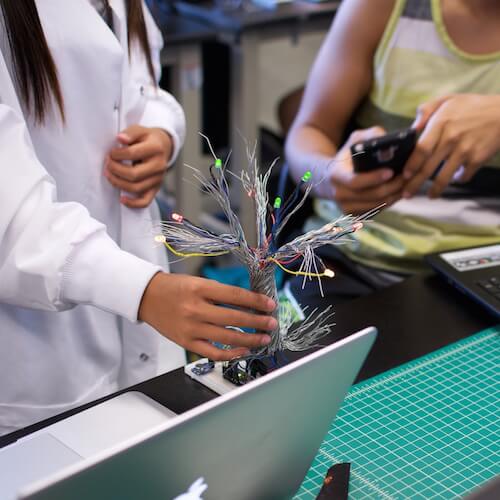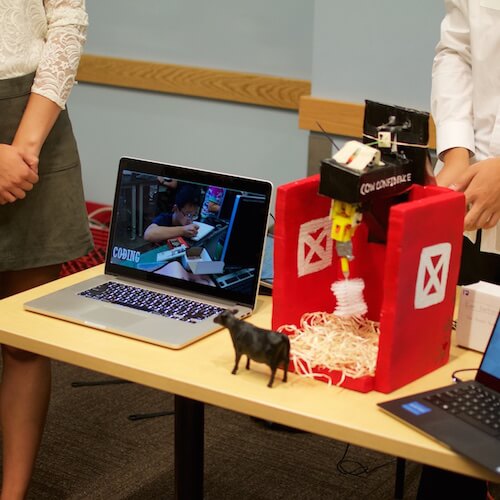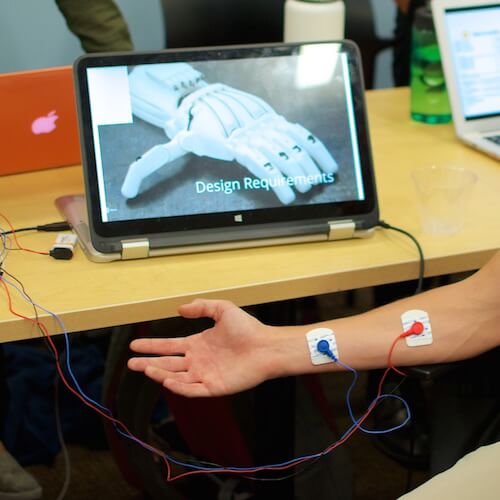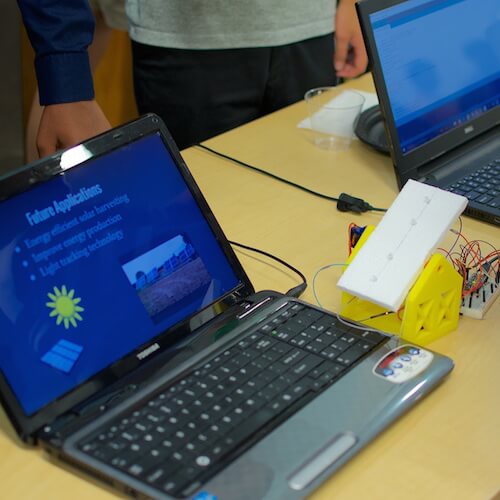ENG 10: Fundamentals of Engineering Applications
Projects
As part of ENG 10, students will work in teams to complete a final project involving a multidisciplinary engineering problem. The specific problems may change from quarter-to-quarter or year-to-year, but the projects will always involve the same key components:
- Use analog or digital sensors to quantify a physical phenomenon (e.g. temperature or sound)
- Perform computation on an Arduino microcontroller using the sensor data as input.
- Control a reactive device (e.g. a stepper motor) based on the stimuli from the sensors and results of the computation.
By completing the project, students will gain hands-on experience with the engineering design process. Additionally, students will improve both their technical and professional skillsets. See below for summaries of past ENG 10 projects.
Past Projects
Acoustical noise monitoring
Excessive noise levels can have a variety of negative impacts (decrease sleep quality, increased stress levels, etc.). To better quantify and understand noise levels across the UC San Diego campus, students were challenged to create a system that could both log sound levels and provide non-verbal signaling to users when excessive noise levels are detected.


Automated bovine cleaning
Regular brushing of dairy cows increases both animal happiness and milk production. However, manual brushing is labor intensive and is not easily scaleable. To solve this problem, students were tasked with designing a system to enable automated detection and brushing of cows.
Telemetric robotic control
Telemedicine is an area of active research as it enables medicial professionals to serve a wider range of (spatially-distributed) patients. Enabling remote surgery requires coupling robotics with telemetric control. Students designed proof-of-concept systems to use electromyography (EMG) to sense muscle movement and then translate the EMG signals to control a (simplified) robotic arm.


Light-reactive actuation
The push for increased integration of renewable energy into the electric grid has led to a surge in installations of solar-based power systems in recent years. However, many installations forgo tracking systems due to cost and complexity. For this project, students were asked to design a tracking system for photovoltaic (PV) panels that uses light sensors to autonomously track the sun.